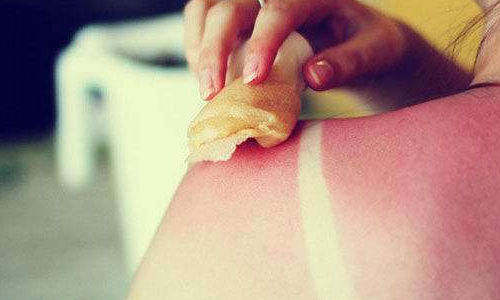We know that you are not deliberately sunburned. You lost time or nodded, now you can tell you lobster red and miserable. Complete damage can take several hours to appear. So, at the first sign, leave the sun and follow the advice of dermatologist Jeffrey Bracken, MD, a member of the Skin Cancer Foundation.
No one is perfect, sunburn can happen. But it’s important to take it seriously and prevent it from happening again. If you have more than five sunburns, your melanoma risk will double.
1. Rapid cooling
If you are near a cold pool, lake or ocean, soak it quickly to cool your skin, but in a matter of seconds, you won’t extend the exposure time. Then cover up and leave the sun immediately. Continue to cool the burn with a cold compress. You can use ice cubes to make ice water for cold compressing, but do not apply ice directly to sunburn. Or take a cool shower or bath, but don’t take too long to dry and avoid irritating soap, which may irritate the skin more.
2. Moisturizing when the skin is moist
Although the skin is still moist, use a mild moisturizing lotion (but not a petroleum or oily ointment that may absorb heat and exacerbate burns). Repeat over the next few days to prevent skin burns or peeling.
3. Reduce inflammation
In the first signs of sunburn, taking non-steroidal anti-inflammatory drugs (NSAIDs) such as ibuprofen, naproxen or aspirin can help treat discomfort and inflammation, the Lubbock Skin Cancer Study in Texas Dr. Brakeen said. You can follow the instructions to continue using the NSAID until the burn feels better. You can also use 1% over-the-counter cortisone cream as directed to help calm redness. Aloe vera can also relieve mild burns and is generally considered safe. Wear loose, soft, breathable clothing to avoid further skin irritation and avoid sunlight.
4. Replenish your liquid
Dr. Brackeen explained that burns can draw fluid to the surface of the skin and away from other parts of the body, so you may dehydrate. It is important to replenish moisture by drinking extra liquids, including water and sports drinks, to help replenish electrolytes and instantly heal your skin.
5. See a doctor if…
If you or your child has severe blisters, fever, and chills in most areas of the body, or if you are embarrassed or confused, you should seek medical help. Do not scratch or blisters, as this may result in infection. Signs of infection include red streaks or exudation of pus.
Bottom line: Your skin will heal, but it has caused real damage. “Repetitive sunburns put you at great risk of skin cancer and premature skin aging, and I hope people will learn from burns,” Dr. Brakeen said. Check out the guidelines in the Skin Cancer Foundation Prevention Handbook. Remember how bad this sunburn feels and then protect yourself from the sun all year round.

